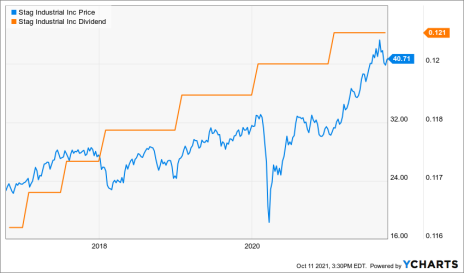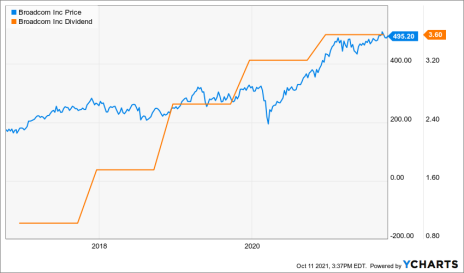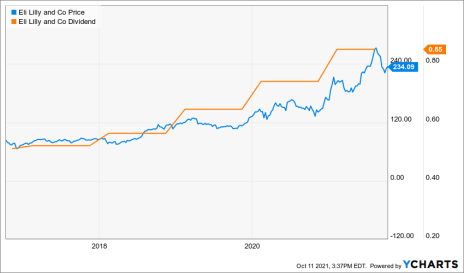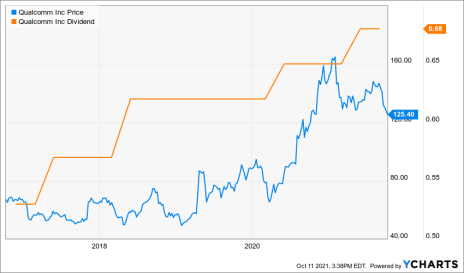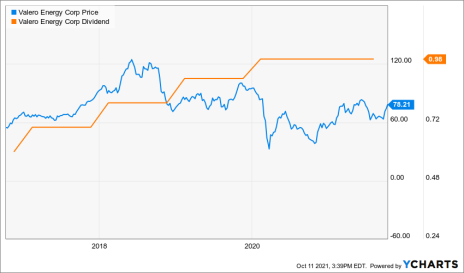There are a lot of reasons why it’s easier to make more money if you already have money. But I will just focus on one undisputable fact, the rich have access to opportunities and investments that most of us do not.
Private equity (PE) or venture capital (VC) is a shining example of such privileged access. PE or VC is money provided to young and growing businesses that otherwise wouldn’t have access to sufficient capital. For ages, these highly profitable investments had been the sole domain of the very wealthy who were able to make fortunes by lending to growing companies at very favorable terms for themselves.
But times are changing.
As financial markets have grown in sophistication, private equity investing is no longer the exclusive domain of the wealthy. There are securities trading on the market today that enable regular investors to mimic the very same money-making strategies employed by the rich and famous.
In this issue, I highlight one of the very best such securities on the market. It has a phenomenal track record with a high dividend yield and a catalyst to move higher in the near future. These companies also tend to thrive in a strong economy and at this point in the economic cycle.
This Month’s Featured Stock
For Great Returns, Invest Like the Wealthy
“The rich get richer, and the poor get poorer.”
Everybody above the age of five probably knows that saying. It’s a good bet that the ancient Romans were running around saying some form of the same thing. The sentiment is ancient. And it’s as relevant today as ever.
The phrase perfectly encapsulates the pervasive attitude among most people regarding class envy and cynicism towards wealth distribution in the American experience. But the phrase, or the truth behind it, can actually be used constructively. We can learn from the rich.
There are a lot of reasons why it’s easier to make more money if you already have money. But I will just focus on one undisputable fact, the rich have access to opportunities and investments that most of us do not.
Private equity (PE) or venture capital (VC) is a shining example of such privileged access. PE or VC is money provided to young and growing businesses that otherwise wouldn’t have access to sufficient capital. This money is typically lent at very high rates of interest and/or in exchange for equity stakes (a percentage of ownership).
Growing businesses with big ambitions need large amounts of capital in order to expand and grow to the next level. But such enterprises often have difficulty getting sizable enough loans from risk-adverse banks, and they are too small to access the capital markets by issuing stocks or bonds. Thus, they are forced into the hands of wealthy individuals and institutions that have money and are in a position to dictate very favorable terms for themselves.
The old Carlyle Group is a perfect example. The fund catered to the very wealthy with limited availability and high minimum investments. Investors in the firm included former Presidents, Saudi princes, CEOs and even the Bin Laden family.
The fund produced astounding average annual returns of 30% for decades after its founding. Such outstanding returns could turn a measly $1 million dollar investment into $190 million over 20 years. Unfortunately, unless you were a Saudi prince or Clause Von Bulow you never had access to this fund or its stellar returns.
But times are changing.
As financial markets have grown in sophistication, private equity investing is no longer the exclusive domain of the wealthy. There are securities trading on the market today that enable regular investors to mimic the very same money-making strategies employed by the rich and famous.
In this issue, I highlight one of the very best such securities on the market. It has a phenomenal track record with a high dividend yield and a catalyst to move higher in the near future. These companies also tend to thrive in a strong economy and at this point in the economic cycle.
Monthly Activity
September 8
U.S. Bancorp (USB) – Rating change “HOLD” to “BUY”
September 15
BlackRock Enhanced Capital Income Fund (CII) – Rating change “BUY” to “HOLD”
Digital Realty Trust (DLR) – Sell ½ $156.06 (total return 10%)
September 29
Digital Realty Trust (DLR) – Sell $146.96 (total return 3.5%)
October 12
Valero Energy (VLO) – Rating change “HOLD” to “BUY”
Chevron (CVX) – Rating change “HOLD” to “BUY”
Buy Compass Diversified (CODI)
What to Do Now
The market has not been good since Labor Day. But it could be a lot worse.
The S&P 500 fell 4.8% in September, making it the worst month in the pandemic recovery. At the lowest close, the index was down 5.4% from the high. So far in October, the market has been bouncing around and is up very slightly.
Big whoop. Sure, a 5.4% decline is a pullback. But it’s only a little more than half of a correction. This is a market that soared nearly 100% in just a year and a half. That’s a lame comeuppance if that’s all there is.
Of course, we’re not out of the woods yet. It’s still a wobbly market that looks like it can’t take much bad news. There’s also a risk that third-quarter earnings disappoint, as supply chain issues and inflation could spoil the party. But this looks like a market that really doesn’t want to go lower. We’ll see what happens.
Despite the recent downward bias of the overall market, several stocks in the portfolio are on strong bulls runs. The energy stocks including Chevron (CVX), Valero Energy (VLO), Enterprise Product Partners (EPD) and ONEOK (OKE) have all had impressive rallies in the last several weeks. The energy sector has come alive as the price per barrel of crude oil has spiked above 80, the highest level since 2014, amidst supply constraints and strong demand.
Yield curve sensitive position U.S. Bancorp (USB) has also broken out of its funk to a new high amidst the rising benchmark 10-year Treasury rate. AGNC Investment Corp. (AGNC) should also benefit but that stock hasn’t moved much yet.
It doesn’t look like the factors causing energy prices to rise are going away anytime soon. I expect the sector rally to continue. All of the four energy stocks now have solid momentum to go along with rising earnings and cheap valuations. These stocks should continue to pay off in the near term. Also, the 10-year yield is likely to continue rising and propel USB and AGNC. All six stocks are now BUY rated.
There are also attractive buys in the portfolio if you have a longer-term perspective, The technology stocks, particularly Qualcomm (QCOM) but also Broadcom (AVGO), have had a weak year as other long-neglected sectors have come alive. I believe technology will rally again when things normalize after the pandemic recovery. These stocks can move fast and make up for lost time, and this is a good entry point with a six-month perspective.
It’s also a good time to buy the alternative energy utilities NextEra Energy (NEE) and Excel Energy (XEL). These former highflyers have been neglected in the pandemic recovery. But they remain a great way for conservative investors to play the growth in clean energy. The stocks are cheap and should have their day in the sun again when the market normalizes.
Featured Stock
Compass Diversified (CODI)
Compass Diversified (CODI) is a holding company that invests in niche middle-market businesses, a segment historically reserved for traditional private equity. It owns ten companies, six in branded consumer businesses and four niche industrial companies.
The businesses are unrelated and therefore provide diversification. The branded businesses include companies that make and sell outdoor wear, food warming systems, baseball equipment, diamonds, and baby products. The industrial businesses make circuit boards, magnetic technologies, and custom packaging.
It’s like a Business Development Company (BDC) in that it invests in promising companies to take them to the next level. These companies tend to be unserved by traditional lenders and need capital and management expertise to get to the next level. Compass targets what is referred to as middle-market companies in the $200 million to $600 million range.
Compass seeks out companies located in North America that have market-leading niches in strong growth sectors. It’s different than traditional private equity companies in that it uses “permanent capital,” which is an open-ended investment for no specified period of time. Private equity companies typically take a stake in a company for five to seven years and then sell it.
It views these companies as longer-term investments and doesn’t try to turn them around and sell them for the quick buck. Compass does sell or divest companies when the price is right, but more in tune with a longer-term strategy. It tends to have a more stabilizing influence for a company when it can focus on the long-term strategy instead of being hampered by short-term targets and fundraising.
Compass refers to itself as a business builder, not an asset trader.
The strategy apparently works. CODI has blown away the performance of its peers as well as that of the overall market, returning 454% over the last ten years and 148% over the last five (with dividends reinvested).
Compass, until recently, was classified as a Master Limited Partnership but recently simplified to a regular corporation. The September 1st conversion should be a catalyst for the stock in the near term.
As a regular corporation, CODI generates a regular 1099 and not those annoying K-1 tax forms. Dividends also qualify for the maximum 15% tax rate (or 20% in some rare cases). Also, the regular corporation classification greatly broadens its appeal to investors. CODI can now be purchased by institutions that are forbidden to buy MLPs and is also now eligible to be listed on indexes.
Lower costs and cost of capital from the simplification will be a huge advantage over competitors. And increasing margins and profitability should ultimately benefit the stock price. The returns were strong already. Now, they should be better.
Simplification has proven to serve stocks well. Stocks in similar businesses including Ares Management Corp. (ARES), KKR & Co. (KKR), The Carlyle Group (CG) and Blackstone Inc. (BX) all recently converted from BDCs or MLPs and saw their PE ratios expand significantly after the conversion.
The Dividend
Currently the dividend, formerly the distribution, has been paid consistently every quarter since 2006. The current $0.36 quarterly payout translates to $1.44 per year for a current yield of 4.95%. The dividend is well-supported by a strong balance sheet and very reasonable for the industry’s 55% to 65% payout ratio.
The stock should get a near-term bump not only from the strong economy, which tends to benefit smaller companies disproportionately, but the simplification should provide an additional tailwind. This is also a great company over the longer term.
When the economy is expanding, like it is now, the companies thrive. During times of contraction or recession, Compass has dry powder available to make great acquisitions on the cheap, which ultimately increases profitability when the economy recovers.
It’s a great time in the economic cycle for this type of company. And Compass is a better way to go than any of the BDCs both in terms of overall strategy and its stock return history.
Portfolio At A Glance, Portfolio Updates and Dividend Calendar
Portfolio at a Glance
| High Yield Tier | ||||||||||
| Security (Symbol) | Date Added | Price Added | Div Freq. | Indicated Annual Dividend | Yield On Cost | Price on 10/11/21 | Total Return | Current Yield | CDI Opinion | Pos. Size |
| AGNC Investment Corp. (AGNC) | 04-14-21 | 17 | Monthly | 1.44 | 9.00% | 16 | -3% | 8.9% | BUY | 1 |
| Blackrock Enhanced Cap & Inc. (CII) | 07-13-21 | 21 | Monthly | 1,12 | 5.2% | 21 | -1% | 5.8% | HOLD | 1 |
| Enterprise Product Partners (EPD) | 02-25-19 | 28 | Qtr. | 1.80 | 8.10% | 24 | 1% | 7.7% | BUY | 1 |
| ONEOK Inc. (OKE) | 05-12-21 | 53 | Qtr. | 3.74 | 7.00% | 63 | 20% | 6.0% | BUY | 1 |
| Realty Income (O) | 11-11-20 | 62 | Monthly | 2.81 | 4.1% | 69 | 11% | 4.2% | HOLD | 1 |
| STAG Industrial (STAG) | 03-21-18 | 24 | Monthly | 1.45 | 3.5% | 42 | 104% | 3.6% | HOLD | 1/2 |
| Verizon Communications (VZ) | 02-12-20 | 58 | Qtr. | 2.51 | 4.7% | 51 | -3% | 4.8% | HOLD | 1 |
| Current High Yield Tier Totals: | 5.5% | 26.6% | 5.3% | |||||||
| Dividend Growth Tier | ||||||||||
| AbbVie (ABBV) | 01-28-19 | 78 | Qtr. | 5.20 | 4.8% | 109 | 63% | 4.7% | BUY | 2/3 |
| Broadcom Inc. (AVGO) | 01-14-21 | 455 | Qtr. | 14.40 | 2.9% | 485 | 11% | 2.9% | BUY | 1 |
| Brookfield Infrastucture Ptrs (BIP) | 03-26-19 | 41 | Qtr. | 2.04 | 3.6% | 56 | 69% | 3.6% | HOLD | 2/3 |
| Chevron Corporation (CVX) | 02-10-21 | 90 | Qtr. | 5.16 | 5.5% | 107 | 21% | 5.0% | BUY | 1 |
| Eli Lily and Company (LLY) | 08-12-20 | 152 | Qtr. | 3.40 | 1.3% | 233 | 57% | 1.5% | HOLD | 1/3 |
| KKR & Co. Inc. (KKR) | 03-09-21 | 48 | Qtr. | 0.58 | 0.9% | 65 | 40% | 0.9% | HOLD | 1 |
| Qualcomm (QCOM) | 11-26-19 | 85 | Qtr. | 2.60 | 1.9% | 123 | 55% | 2.2% | BUY | 1/3 |
| Spectrum Brands Holdings, Inc. (SPB) | 08-11-21 | 81 | Qtr. | 1.68 | 2.1% | 95 | 17% | 1.8% | BUY | 1 |
| U.S. Bancorp (USB) | 12-09-20 | 45 | Qtr. | 1.68 | 3.3% | 62 | 39% | 3.0% | BUY | 1 |
| Valero Energy Corp (VLO) | 06-26-19 | 84 | Qtr. | 3.92 | 6.0% | 79 | 4% | 5.3% | BUY | 1/2 |
| Current Dividend Growth Tier Totals: | 3.2% | 37.6% | 3.1% | |||||||
| Safe Income Tier | ||||||||||
| Invesco Preferred (PGX) | 04-01-14 | 14 | Monthly | 0.74 | 4.9% | 15 | 55% | 4.9% | HOLD | 1/2 |
| NextEra Energy (NEE) | 11-29-18 | 44 | Qtr. | 1.54 | 1.8% | 79 | 88% | 2.0% | BUY | 1/2 |
| Xcel Energy (XEL) | 10-01-14 | 31 | Qtr. | 1.83 | 2.8% | 63 | 155% | 2.9% | BUY | 2/3 |
| Current Safe Income Tier Totals: | 3.2% | 99.3% | 3.3% | |||||||
Portfolio Updates
High Yield Tier
The investments in our High Yield Tier have been chosen for their high current payouts. These investments will often be riskier or have less capital appreciation potential than those in our other two tiers, but they’re appropriate for investors who want to generate maximum income from their portfolios right now.
AGNC Investment Corp. (AGNC – yield 8.9%) – This mortgage REIT fell from almost 19 per share to under 16 over the summer as the yield curve flattened. The falling longer-term rates limit profits by narrowing the spread AGNC earns on its mortgages. But the benchmark 10-year rate has been moving higher, fast. The rate is now over 1.6% from 1.28% a little over a month ago. It also looks to be heading higher. Unfortunately, AGNC’s stock price hasn’t really responded yet. It should. Be patient. In the meantime, it pays about a 9% yield with monthly payments. BUY
Blackrock Enhanced Capital and Income Fund (CII – yield 5.8%) – This covered call ETF is a great way to generate a high yield in a market that is unlikely to reap the same gains going forward as it has over the last year and a half. But CII generally moves in sync with the overall market, and the market could go either way at this point. As an act of caution, the rating was downgraded to HOLD while the market is riskier than usual in the near term. HOLD
Enterprise Product Partners (EPD – yield 7.7%) – It looks like the ship is finally coming in for this midstream energy partnership. Energy stocks have been red hot as the price per barrel of crude oil has soared to over 80 amidst limited supply and surging demand. The stock was highly undervalued with an obscenely high yield that’s safe. But the market didn’t seem to care, until now. After wallowing in oblivion for months, EPD has moved up 12% in just the last three weeks. This might still be the early stages of the move we’ve been waiting for. BUY
ONEOK Inc. (OKE – yield 6.0%) – All the same things that are true of EPD are true for this midstream energy powerhouse, except OKE moves a lot faster. This bad boy has moved over 26% higher since late August and almost 20% in the last three weeks. It’s now right near the 52-week high. But it’s still well below the pre-pandemic high with much high earnings in an increasingly hot sector. BUY
Realty Income (O – yield 4.2%) – The recent pullback in defensive REIT stocks dragged this legendary income REIT down with them. O actually had a 12% correction in a relatively short amount of time. However, it appears to be recovering and moved steadily higher so far this month. I’m still high on this REIT’s prospects over the rest of the year and I’m confident holding it through the rest of the market turbulence. HOLD
STAG Industrial (STAG – yield 3.6%) – This industrial REIT also pulled back in the late summer but has been trending higher of late. Aside for these short-term sector rotations and market gyrations, STAG still has the right stuff. It’s in a great niche where demand for industrial properties greatly exceeds the supply and there’s still plenty of opportunities for growth in a fragmented industrial real estate market. It’s also more cyclical than its peers at a time when the economy is still booming. HOLD
Verizon Communications (VZ – yield 4.8%) – Performance has been disappointing for this wireless stock. While VZ does tend to move independently of the overall market, it is independently moving lower. Competition for 5G is fierce and getting uglier. VZ does have certain advantages over the competition and probably more potential for revenue growth from 5G. But it remains questionable how long it will take to realize these higher earnings. The stock is at the low point of the recent range and should at least be able to bounce back to the high point at some point in the months ahead. HOLD
Dividend Growth Tier
To be chosen for the Dividend Growth tier, investments must have a strong history of dividend increases and indicate both good potential for and high prioritization of continued dividend growth.
AbbVie (ABBV – yield 4.7%) – In the near term, ABBV is slowly crawling back from the selloff over the summer caused by the FDA requiring an ugly warning label of one of its rising-star drugs. Longer term, this is still a great stock to own. It has a fantastic pipeline that should overcome the loss of Humira’s U.S. patent protection in 2023. It sells at a dirt-cheap valuation of just nine times forward earnings and has a high and safe dividend. The future should be bright, and this is one you buy and forget about. BUY
Broadcom Inc. (AVGO – yield 2.9%) – This technology goliath stock continues to trend higher, albeit slowly and in a bouncy fashion. Despite this crazy pandemic recovery market, strong and growing earnings along with attractive valuation is still a recipe for good returns. Semiconductor stocks have been strong a should remain that way. AVGO should benefit from that fact along with the 5G rollout and the longer-term trend toward cloud-based applications. Technology continues to proliferate, and this stock should move higher over time. BUY
Brookfield Infrastructure Partners (BIP – yield 3.6%) – This infrastructure partnership doesn’t move fast but it’s clearly trending the right way. It characteristically pulled back after making a new high in early September. It seems to be slowly climbing back towards that high recently. However, further weakness in the market could delay the recovery over the next couple of weeks. Longer term, infrastructure is an increasingly popular subsector as it continues to be in the news. Brookfield should also get an earnings growth spurt in the quarters ahead from the recent Inter Pipeline acquisition. HOLD
Rating change “HOLD” to “BUY”
Chevron Corp. (CVX – yield 5.0%) – Oil prices have soared to the highest level since 2014. Supply constraints and strong demand persist, and prices should go even higher. Chevron is the most highly levered to oil prices of its large integrated energy company peers. Earnings should be stellar over the last two quarters. CVX is up 13% in the last three weeks yet still below the 52-week high and pre-pandemic high. I expect more of the same going forward. BUY
Eli Lilly and Company (LLY – yield 1.5%) – It’s been a wild ride for this relatively conservative healthcare play. LLY had soared 67% YTD by the summer and then gave back about half of those gains. That’s not unusual for this stock, which is why we took profits near the high. The excess from jubilation over the likely approval of its Alzheimer’s drug next year is squeezed out of it. Now, the company still has one of the best pipelines with forecast earnings grows of 15% per year for the next five years. It’s still a great stock to own and hold, and now it’s reasonably valued. HOLD
KKR & Co. Inc. (KKR – yield 0.9%) – The alternative investment asset manager pulled back over 10% from the August high on fears of contagion from the Chinese real estate issues with Evergrande. If the situation escalates to a bigger crisis it would impact some of KKR’s investments. But aside from that, the company is absolutely killing it. Earnings were spectacular and future growth looks strong. KKR is expected to grow earnings 95.9% in this quarter. The Chinese situation seems to have abated, for now. KKR has moved up about 8% over the last week and appears to be getting back on track. HOLD
Qualcomm Inc. (QCOM – yield 2.2%) – Qualcomm has been reeling because of problems in China, where it does a fair amount of business. But the semiconductor sector has been solid. I don’t know when things will get better for the stock, but I’m still confident it will shine again. Earnings have been spectacular and will likely remain excellent for the next several quarters. Things also look solid further down the road. I believe in the stock and it’s in oversold territory. BUY
Spectrum Brands Holdings, Inc. (SPB – yield 1.8%) – This home-centric consumer stock looks encouraging. It has held strong and even trended higher after the huge one-day move following the announcement it is selling its home improvement division for $4.3 billion. Home sales should continue to be strong, and the sale eliminates the debt issues which had been holding the stock back. BUY
U.S. Bancorp (USB – yield 3.0%) – The rising yield curve is propelling the stock higher. After going nowhere for several months, USB has moved about 12% higher in the last three weeks as the rising 10-year rate got more attention. It just made a new 52-week, post-pandemic and all-time high. Rising rates should have this regional bank firing on all cylinders. I expect the momentum to continue. Earning will be reported in a few days but are unlikely to reflect the recent interest rate spike. BUY
Rating change “HOLD” to “BUY”
Valero Energy Corp. (VLO – yield 5.3%) – This refiner is a high-leverage play on the energy sector. Lately, that’s been a beautiful thing. VLO has spiked 25% higher in the last three weeks. Yet, the stock is still well below the pre-pandemic high and miles below the all-time high. Demand for refined product is high and now prices are aligning in a way that supports higher margins. This is the move we’ve been waiting for. And it should have further to go. The rating is being raised to a BUY. BUY
Safe Income Tier
The Safe Income tier of our portfolio holds long-term positions in high-quality stocks and other investments that generate steady income with minimal volatility and low risk. These positions are appropriate for all investors, but are meant to be held for the long term, primarily for income—don’t buy these thinking you’ll double your money in a year.
Invesco Preferred ETF (PGX – yield 4.9%) – After falling during the pandemic, this preferred stock ETF has recovered and is back near the pre-pandemic high. This preferred stock ETF is much less volatile than the stock market while providing a big yield. It also adds diversification as preferred stock performance is historically not correlated to the stock and bond markets. As the market get more turbulent and uncertain, it’s a safer way to generate a high yield. HOLD
NextEra Energy (NEE – yield 2.0%) – This regulated/alternative utility and former market juggernaut has just been bouncing around all over the place since the pandemic. Investors seem to have forgotten all about the growth in alternative energy and the fact that NEE is a great way for conservative investors to play the trend during this crazy market. But noting has changed within the company. Things will get back to normal and NEE should retake its place as a superstar. It’s still a great entry point for the stock. BUY
Xcel Energy (XEL – yield 2.9%) – It’s the same basic story with XEL as it is with NEE. But XEL has suffered a much bigger downdraft. This alternative energy utility is smaller and more volatile than NEE. It’s been on the outs lately and is near the low point of one of its dramatic bounces. This is an exceptional opportunity right now for longer-term investors. XEL should at least bounce back near the higher end of its recent range. But it should break out beyond that in the post-pandemic recovery market. BUY
Dividend Calendar
Ex-Dividend Dates are in RED and italics. Dividend Payments Dates are in GREEN. Confirmed dates are in bold, all other dates are estimated. See the Guide to Cabot Dividend Investor for an explanation of how dates estimated.
The next Cabot Dividend Investor issue will be published on November 10, 2021.







